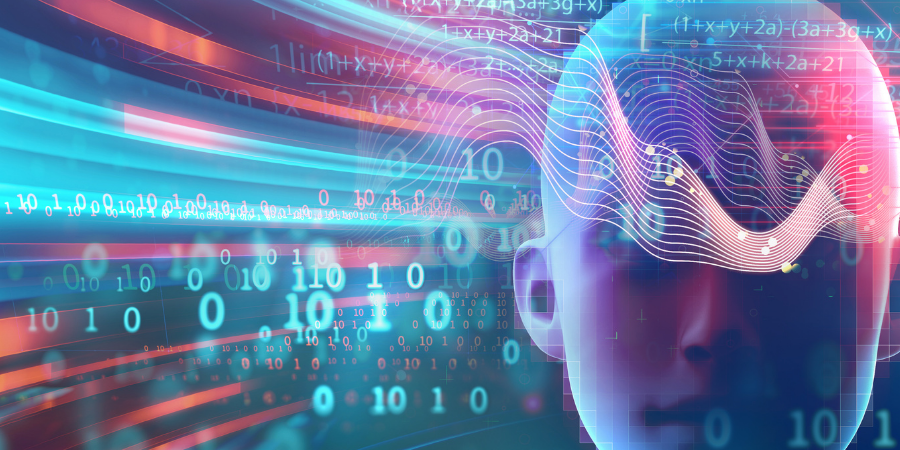
In 1959 an American researcher Arthur Samuel, a pioneer in artificial intelligence, coined the term Machine Learning as “it gives computers the ability to learn without being explicitly programmed.”
Machine learning is a subfield of computer science that evolved dramatically in the last decade. It has produced new methods for representation, storage, and data processing methods, improving machine-dependent decisions’ accuracy. It is the “man-made software model to recognize, understand and analyze patterns in unstructured data” without explicitly programming. The ultimate goal of ML is to build systems that can automatically improve with experience without requiring explicit programmatic changes or human intervention.
Machine learning can be used for various reasons such as predicting numbers or business decisions, serving and marketing products, handling customer service, getting data or content, deciding which emails to send, identifying trends, discovering relationships, etc. It also found its application in the medical field, helps doctors take proper care of their patients, and is highly beneficial in saving lives.
Types of Learning
Machine learning models can be trained using three primary learning methods: Supervised learning, unsupervised learning, and reinforcement learning.
Supervised learning is a method by which we train a machine using well-labeled data. This means that while we train the model, we also have the correct output for all the model’s inputs. Whenever the model makes a decision based on an input, it then compares it with the correct output and calculates the amount of error it has made. Using the error data, it reconfigures itself to make better decisions next time, and this loop goes on for quite some time until the model accuracy becomes significantly high. It is similar to how humans learn through trial and error under the supervision of a mentor or a teacher. But the goal is not to just teach the model to be correct on the training data; instead, the model learns to generalize so that when it sees something outside the training dataset while it is being used in the real world, it can still make accurate decisions.
Unsupervised learning involves learning using untagged data and allows the model to act on that information without guidance. Think of unsupervised learning as an intelligent child learning without any guidance. Here the algorithm derives data patterns from the input data on its own, and it clusters data points into classes that can provide valuable insights into the data. Through clustering, we can learn more about data points when they are grouped. For example, you can use unsupervised learning algorithms (K-means clustering) to group viewers on an OTT platform based on their interests, age, and geographic location.
After examining the data samples, the model applies the acquired knowledge to the real world. However, algorithms learn from data, rather than direct human intervention, the parameters that will form a mathematical prediction model. The basic premise of machine learning is to create algorithms that can take inputs and use statistical analysis to predict the output while updating the output as new data becomes available. Machine learning algorithms use our data to learn and solve predictive actions automatically.
Reinforcement learning is a method of training the model by providing positive or negative feedback. Just like in unsupervised learning, the data here lack labels. A reinforcement learning model has an environment it can perceive. Whenever the model makes a decision, it is rewarded with positive feedback if it makes the desired choice and punished for the undesired ones. Thus, it learns through trial and error.
Applications of Machine Learning
Machine Learning is used in a wide range of applications in Engineering, Software, Professional Services, Business Analytics, and Non-profit Organizations. Machine learning algorithms are all around us, and Self-driving Cars, Natural Language Processing (NLP), Text Analytics, Text to Speech, Computer Vision are all examples of machine learning.
Why Do We Need Machine Learning?
Machine learning's ability to analyze thousands of data points simultaneously and apply algorithms faster than any human allows machine learning to solve problems that humans have not yet identified. Machine learning algorithms help build intelligent systems that can learn from experience and historical data for accurate results. In particular, deep learning models are used in the most advanced artificial intelligence applications.
In the medical field, using software to analyze and compare symptoms against databases containing millions of other cases and illnesses has led to faster diagnosis of illnesses and ailments, saving lives through speedier treatment and reduced time spent in the healthcare system. Disease prevention has also been facilitated primarily by predicting potential health problems a person may be susceptible to, depending on age, socioeconomic status, genetic history, etc.
Banks and financial institutions use machine learning to detect and prevent fraudulent transactions and identify information in financial data so that they can find the best investment opportunities, advise investors when to trade, and provide other important information related to financial matters.
Machine learning platforms are some of the most competitive areas of enterprise technology. Most digital technology vendors, including Amazon, Google, Microsoft, IBM, and others, are looking to bring customers to platform services that span the full spectrum of machine learning activities. It includes data collection and preparation, data classification, modeling, training, and application deployment.
Many experts speculate that the future of retail will depend on artificial intelligence. As enterprise deep learning applications, machine learning will become even more adept at collecting, analyzing, and using data to personalize people’s shopping experience and develop tailor-made targeted marketing campaigns.



























 Batoi Corporate Office
Batoi Corporate Office